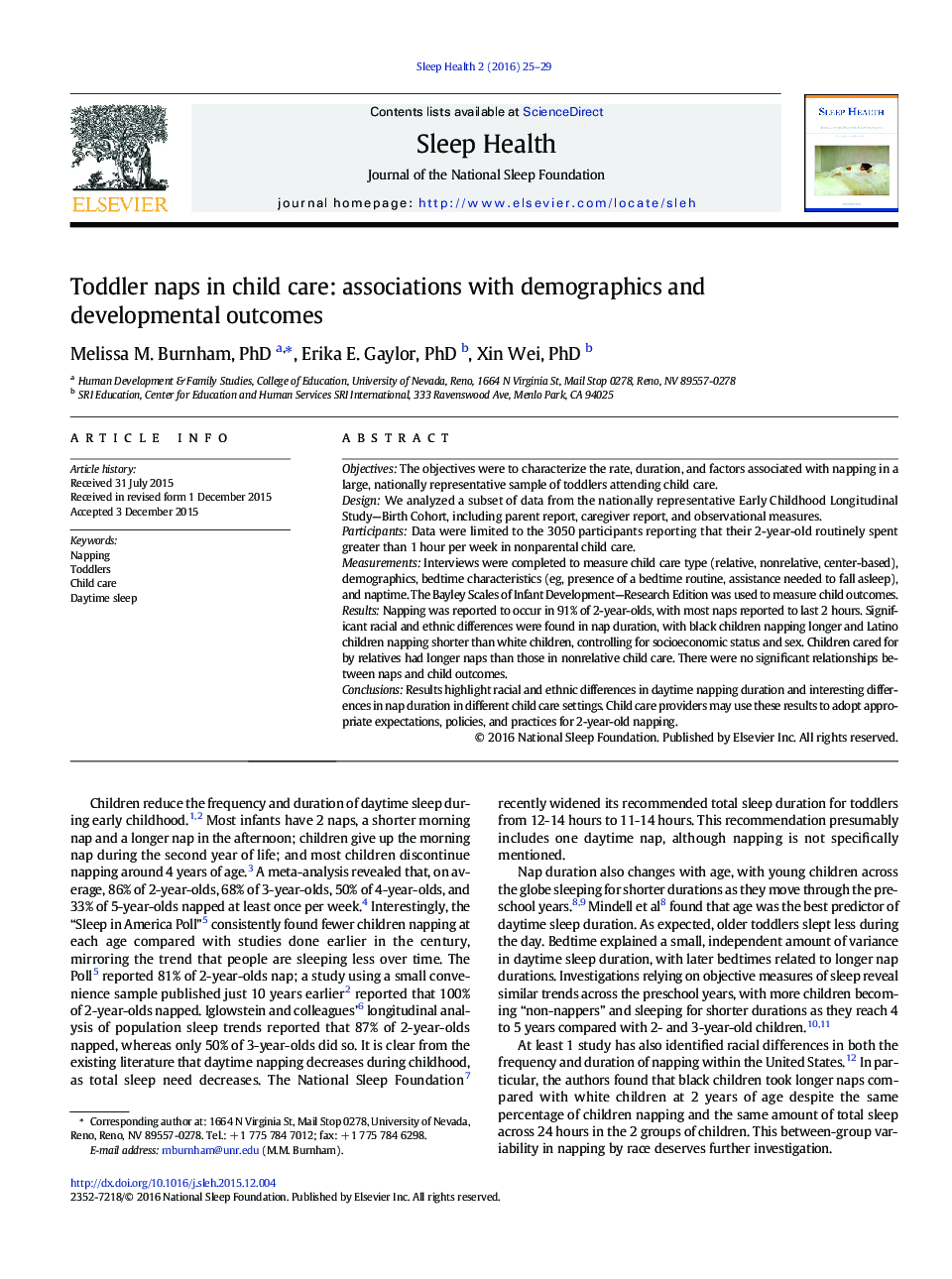| Article ID | Journal | Published Year | Pages | File Type |
|---|---|---|---|---|
| 916304 | Sleep Health | 2016 | 5 Pages |
ObjectivesThe objectives were to characterize the rate, duration, and factors associated with napping in a large, nationally representative sample of toddlers attending child care.DesignWe analyzed a subset of data from the nationally representative Early Childhood Longitudinal Study—Birth Cohort, including parent report, caregiver report, and observational measures.ParticipantsData were limited to the 3050 participants reporting that their 2-year-old routinely spent greater than 1 hour per week in nonparental child care.MeasurementsInterviews were completed to measure child care type (relative, nonrelative, center-based), demographics, bedtime characteristics (eg, presence of a bedtime routine, assistance needed to fall asleep), and naptime. The Bayley Scales of Infant Development—Research Edition was used to measure child outcomes.ResultsNapping was reported to occur in 91% of 2-year-olds, with most naps reported to last 2 hours. Significant racial and ethnic differences were found in nap duration, with black children napping longer and Latino children napping shorter than white children, controlling for socioeconomic status and sex. Children cared for by relatives had longer naps than those in nonrelative child care. There were no significant relationships between naps and child outcomes.ConclusionsResults highlight racial and ethnic differences in daytime napping duration and interesting differences in nap duration in different child care settings. Child care providers may use these results to adopt appropriate expectations, policies, and practices for 2-year-old napping.
